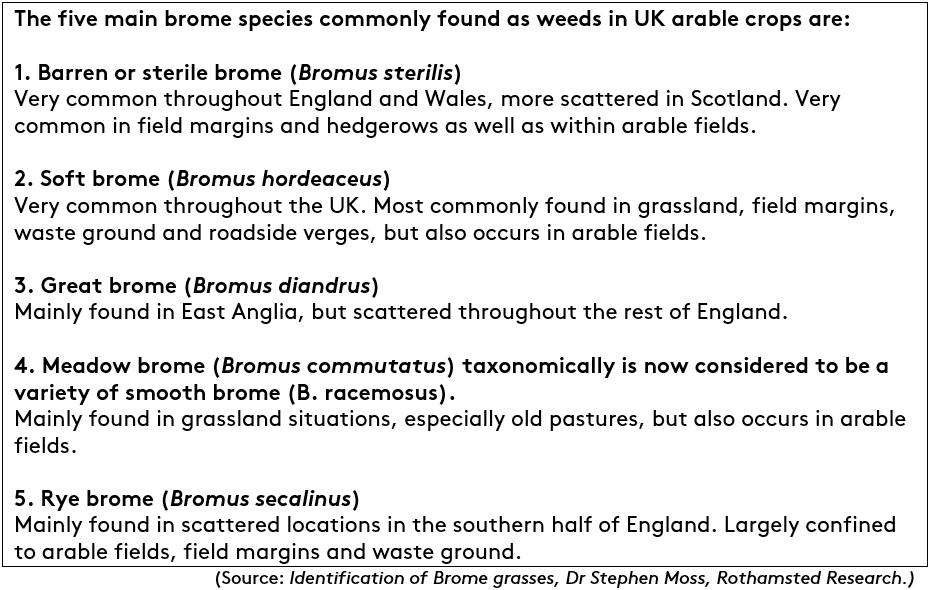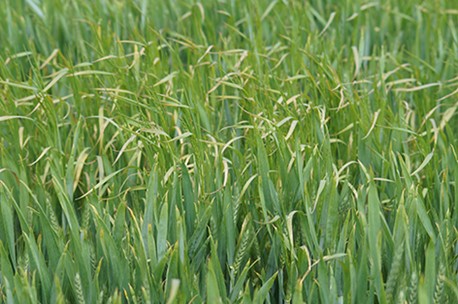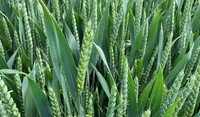
Multiple herbicide actives needed to power up brome control

Whilst classified as a very competitive weed, brome has largely been confined to field margins, with any seeds that migrated into fields traditionally prevented from germinating by the burying action of ploughing. However, the increasing popularity of min-till and no-till establishment systems – as a cheaper, more soil-friendly alternative to ploughing – has resulted in increased brome populations within cereal and oilseed rape crops.
This poses a significant threat to crop viability, not just because their vigorous growth habit means brome species can cause yield reductions on a par with black-grass and ryegrass (a population of five plants/m2 typically causes a yield loss of 5% in cereals), but because resistance to ALS-inhibiting herbicides has already been confirmed in UK brome populations.
Growers must therefore use a robust sequence of pre- and post-emergence herbicides containing a range of different active ingredients to ensure adequate levels of control of the UK’s five main brome species are achieved.

Trials highlight the best controls
New box trials carried out on behalf of ADAMA have shown that TOWER® (40 g/l diflufenican, 300 g/l pendimethalin and 250 g/l chlorotoluron) is effective against troublesome annual meadow grass and broad-leaved weeds. It also offers useful activity against sterile, meadow and rye brome, and provides good activity as a partner product in ryegrass and groundsel control programmes.
The same independent trials, which were carried out by ADAS, also indicated that the efficacy of TOWER® varies according to target species and timing of application, with each species of brome responding differently.
A tailored approach
As a result, instead of taking a ‘carte blanche’ or farm-wide approach to brome control, growers must understand exactly which species they are tackling before tailoring their weed control programme to match the growth stage of crops and germination phase of weeds on a field-by-field basis.
For example, rye and sterile brome were shown to be the most susceptible to TOWER® when applied at the pre-emergence or early post-emergence (GS11-13) timings, while meadow brome is only susceptible to TOWER® when it is applied in combination with diflufenican at the pre-emergence timing, or when applied with prosulfocarb from pre-emergence through to tillering (GS21). The addition of prosulfocarb was also shown to improve control at all timings for all species of brome.
The core message is that growers can no longer rely solely on post-emergence ALS treatments to clean-up crops in the spring. Instead, agronomists and growers should also factor in early post-emergence treatments to extend the residual life of pre-emergence applications.
Added efficacy in OSR
Additional trial work has also shown that FALCON® (100g/l propaquizafop) – a leading herbicide for the control of volunteer cereals in broad-leaved crops – provides excellent protection against four of the brome species, giving a 92-98% reduction in target populations of ALS resistant barren, great, meadow and rye brome in crops such as oilseed rape.
FALCON also partners well with cycloxidim to control different brome species as they emerge throughout the autumn: an application of FALCON® will provide good control of volunteer cereals at the beginning of the season, with a subsequent treatment of cycloxydim offering good activity against later emerging grassweeds.

Brome species are becoming more problematic in min-till systems where they can cause yield reductions on a par with black-grass and ryegrass.


